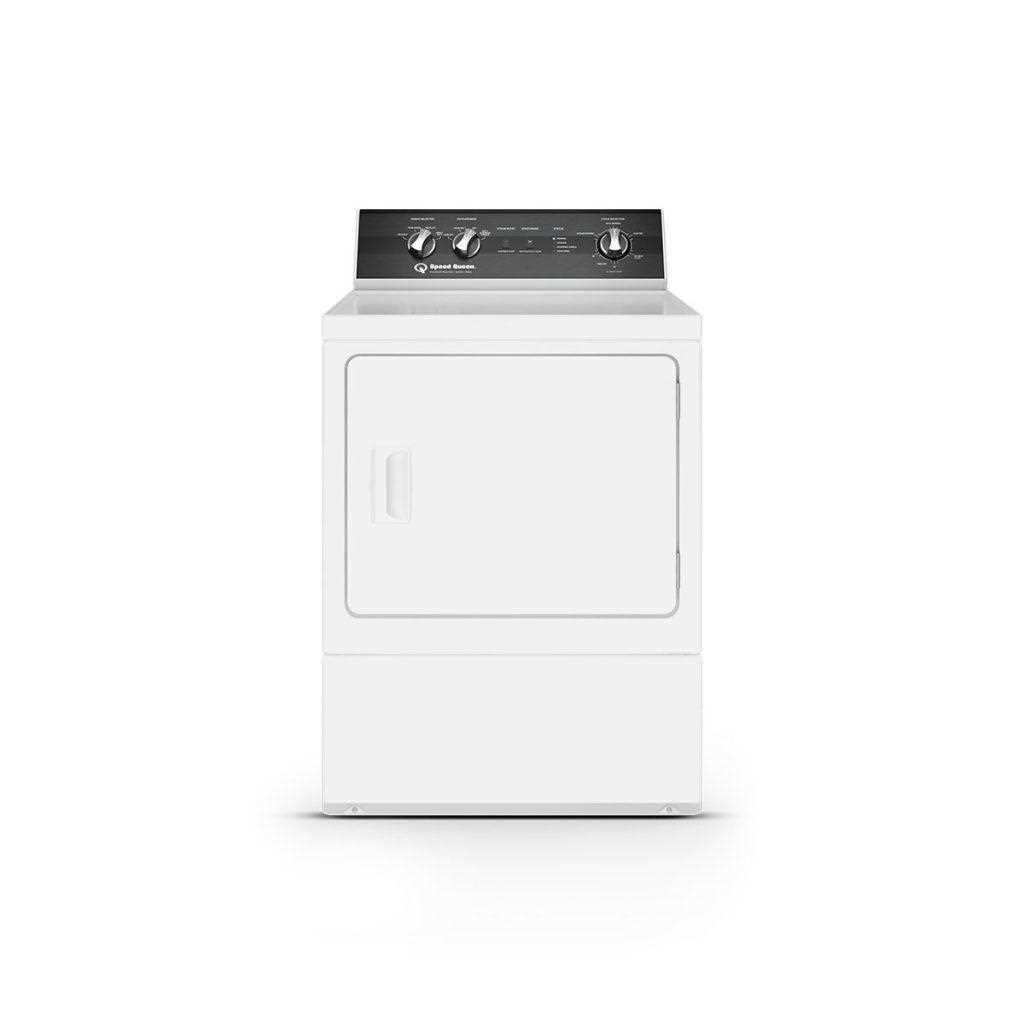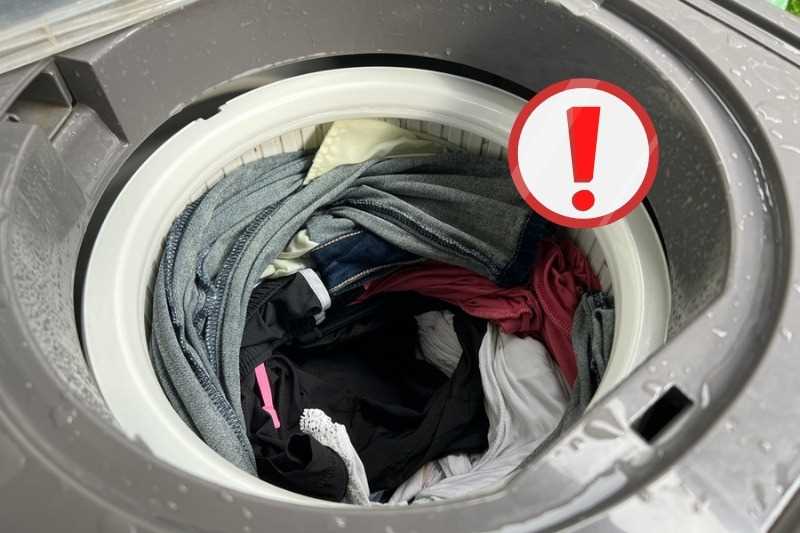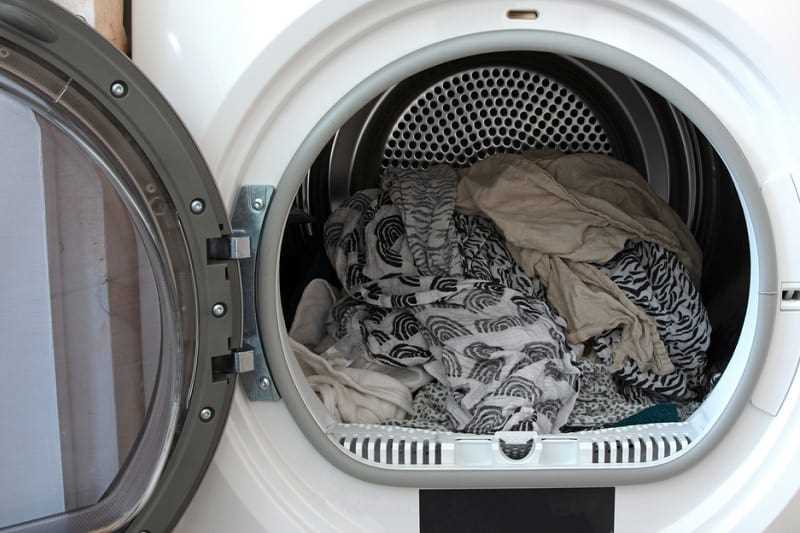




When it comes to doing laundry, many of us rely on our trusty tumble dryer to get the job done quickly and efficiently. However, did you know that overdrying your clothes in the tumble dryer can actually be harmful? Overdrying clothes can lead to shrinkage, damage to fabrics, and even increased risk of fire. In this article, we will explore some common mistakes to avoid when using your tumble dryer to ensure your clothes come out perfectly dried without any negative consequences.
One of the most common mistakes people make when using a tumble dryer is setting it to a high heat setting for an extended period of time. This can cause the fabrics to become overly dry and brittle, leading to shrinkage and damage. It is important to follow the care instructions on your clothing labels and select the appropriate heat setting for each load. Additionally, try to avoid overdrying small loads of laundry, as this can increase the risk of damage to the fabrics.
Another mistake to avoid is leaving your clothes in the tumble dryer for too long after they are already dry. This can result in the fabrics becoming overly heated and potentially leading to a fire hazard. It is recommended to remove your clothes from the dryer as soon as they are dry to prevent any unnecessary risks. If you are unable to tend to your laundry immediately, consider using the automatic shut-off feature on your dryer to avoid any potential dangers.
In conclusion, overdrying clothes in a tumble dryer can indeed be harmful. It is important to avoid common mistakes such as using high heat settings for extended periods, overdrying small loads, and leaving clothes in the dryer for too long. By following these tips, you can ensure that your clothes are dried effectively without any negative consequences. Taking care of your clothes and using your tumble dryer responsibly will not only protect your garments, but also help extend the lifespan of your appliance.
Can Overdrying Clothes: The Dangers and Risks of Tumble Dryers
Tumble dryers are a convenient appliance for drying clothes quickly and efficiently. However, if not used properly, they can pose certain dangers and risks. One common mistake that people make is overdrying their clothes in a tumble dryer. Let’s take a look at the potential dangers and risks associated with this practice.
1. Fire Hazard
Overdrying clothes in a tumble dryer can increase the risk of fire. When clothes are subjected to excessive heat for a prolonged period, they can become extremely dry and brittle. This increases the chances of them catching fire due to the high temperatures inside the dryer. It is important to follow the manufacturer’s instructions and avoid leaving the dryer unattended when in use.
2. Fabric Damage
Overdrying clothes can also cause damage to the fabric. Excessive heat can shrink, fade, and weaken certain types of fabrics such as delicate or synthetic materials. This can result in clothes losing their shape, color, and overall quality. It is advisable to set the dryer to a lower heat setting or opt for a shorter drying cycle to prevent fabric damage.
3. Increased Energy Consumption
Running a tumble dryer for longer than necessary to overdry clothes not only poses risks, but it also leads to increased energy consumption. This means higher electricity bills and a negative impact on the environment. It is recommended to use the appropriate drying settings and remove clothes from the dryer as soon as they are dry to save energy and money.
4. Reduced Lifespan of the Dryer
Overdrying clothes can put unnecessary strain on the internal components of the tumble dryer, which can lead to a shortened lifespan for the appliance. Constant exposure to excessive heat can cause wear and tear on the motor, heating element, and other vital parts. To prolong the life of the dryer and avoid costly repairs or replacements, it is important to use it according to the recommended guidelines.
5. Increased Wrinkles and Ironing Time
Overdrying clothes can result in increased wrinkles and creases. When clothes are excessively dried, they lose their moisture and become more prone to wrinkling. This can lead to longer ironing time and increased frustration. To minimize wrinkles, it is best to remove clothes from the dryer while they are slightly damp and hang them up or fold them immediately.
In conclusion, overdrying clothes in a tumble dryer can pose various dangers and risks, including fire hazards, fabric damage, increased energy consumption, reduced lifespan of the dryer, and increased wrinkles. To avoid these issues, it is essential to follow the manufacturer’s instructions, use appropriate drying settings, and remove clothes from the dryer as soon as they are dry.
Avoid Overdrying: The Importance of Proper Drying
Proper drying of clothes is essential not only for the longevity of your garments but also for saving energy and ensuring safety. Overdrying clothes in a tumble dryer can lead to various negative consequences, including damage to fabrics, higher energy consumption, and potential fire hazards. By following some simple guidelines, you can avoid overdrying and take care of your clothes effectively.
1. Preserve Fabric Quality
Overdrying clothes can cause shrinking, fading, and weakening of the fabric fibers. When fabrics are exposed to excessive heat and prolonged drying periods, they lose moisture excessively, which can lead to brittleness and breakage. It is important to read and follow the care labels on your clothes to determine the appropriate drying time and temperature.
2. Save Energy
Overdrying clothes not only damages them but also wastes energy. Tumble dryers consume a significant amount of electricity, and running them for extended periods unnecessarily can significantly increase your energy bills. By carefully monitoring the drying time and using the correct settings, you can save energy and reduce your environmental impact.
3. Prevent Fire Hazards
Overdrying clothes can create a dangerous situation if the heat causes fabrics to ignite. Synthetic materials such as polyester and nylon are particularly susceptible to catching fire when exposed to extreme heat. To ensure safety, always follow the manufacturer’s instructions and avoid leaving the dryer unattended.
4. Use Moisture Sensors

Many modern tumble dryers are equipped with moisture sensors that detect when the clothes are dry and automatically stop the drying cycle. These sensors help prevent overdrying and ensure that clothes are only exposed to the necessary amount of heat and drying time. If your dryer does not have a moisture sensor, try using the lowest heat setting and shorter drying cycles.
5. Hang or Air Dry When Possible
Avoid excessive use of tumble dryers by choosing to hang or air dry your clothes whenever possible. Hanging clothes to dry naturally not only saves energy but also helps to extend the lifespan of your clothes. Fabrics such as delicate items, wool, and linen often benefit from air drying because it minimizes the risk of damage or shrinkage.
By following these guidelines, you can avoid overdrying your clothes and ensure that they stay in good condition for longer. Proper drying techniques not only protect your clothes but also help save energy and reduce the risk of fire hazards.
The Negative Effects of Overdrying Clothes in a Tumble Dryer

While the convenience of a tumble dryer cannot be denied, it is important to use it properly to avoid any negative effects. One common mistake that people make is overdrying their clothes in the tumble dryer. Here are some negative effects that can occur as a result:
1. Damage to clothing
Overdrying clothes in a tumble dryer can cause damage to the fabric. The high heat and prolonged exposure can lead to shrinkage, fading, and weakening of the fibers. This can result in garments losing their shape, color, and overall quality.
2. Increased energy consumption

Overdrying clothes not only harms your garments but also wastes energy. Tumble dryers consume the most energy when they are running at high heat for extended periods of time. By overdrying clothes, you are unnecessarily using more energy than needed, which can increase your electricity bill.
3. Environmental impact
Excessive energy consumption due to overdrying also has an environmental cost. The more energy we consume, the more greenhouse gases are emitted in the process. By using the tumble dryer efficiently and avoiding overdrying, you can help reduce your carbon footprint and contribute to a more sustainable future.
To prevent these negative effects, it is recommended to follow the fabric care instructions provided by the clothing manufacturer. Additionally, consider using specialized settings on your tumble dryer that allow for shorter drying times or lower heat levels. This will help prolong the lifespan of your clothes and reduce energy consumption.
Clothing Damage: Overdrying and Its Impact on Fabric
Overdrying clothes in a tumble dryer may seem harmless, but it can actually have a detrimental effect on the fabric of your clothing. Understanding the impact of overdrying is essential for maintaining the quality and longevity of your clothes.
Fading Colors
One of the most apparent consequences of overdrying clothes is the fading of colors. Excessive heat can cause the dyes in your clothes to break down and fade over time. This is especially true for vibrant or dark-colored fabrics. If you notice that your clothes are losing their color faster than usual, overdrying could be the culprit.
Shrinking and Distortion

Overdrying can also lead to shrinking and distortion of your clothing. Natural fibers like cotton and wool are more prone to shrinking when exposed to high temperatures for an extended period. As the fabric dries out excessively, it can lose its elasticity and become stiff, leading to a distorted fit. Pay attention to the care labels on your garments and avoid overdrying delicate fabrics to prevent this issue.
Increased Wear and Tear
Excessive drying can cause unnecessary wear and tear on your clothes. The constant tumbling and exposure to excessive heat can weaken the fibers, resulting in fabric that is prone to pilling, fraying, and general deterioration. If you notice your clothes are wearing out faster than usual, it may be due to overdrying in the tumble dryer.
Static Electricity
Another effect of overdrying is an increase in static electricity. Dry air and excessive heat can cause static buildup in your clothes, leading to those annoying electric shocks and clingy fabrics. To minimize static, try using dryer sheets or wool dryer balls that are designed to reduce static while drying.
How to Avoid Overdrying
To prevent these negative effects on your clothes, here are some tips to avoid overdrying:
- Follow the care labels: Always check the manufacturer’s instructions on the care label of your garments. They provide information on the appropriate drying settings and temperature.
- Use moisture sensors: If your dryer has a moisture sensor option, enable it. This feature automatically detects when the clothes are dry and stops the drying process, preventing overdrying.
- Use lower heat settings: Opt for lower heat settings on your dryer to reduce the risk of overdrying. This is especially important for delicate fabrics.
- Remove clothes promptly: As soon as the drying cycle is complete, remove your clothes from the dryer to prevent them from sitting in the heat and drying out further.
By avoiding the mistake of overdrying your clothes, you can preserve their color, shape, and overall quality, ensuring that they last longer and look better for years to come.
Energy Efficiency: How Overdrying Wastes Energy and Money
Overdrying clothes in a tumble dryer not only harms the fabric but also wastes a significant amount of energy and money. The excessive heat and prolonged drying times result in unnecessary energy consumption, increasing your utility bills and contributing to environmental pollution. Understanding the impact of overdrying on energy efficiency can help you make more informed decisions when using your tumble dryer.
1. Increased Energy Consumption
When clothes are overdried, the tumble dryer continues to heat and run even after the clothes are already dry. This leads to a significant amount of wasted energy. The longer your dryer runs, the more energy it consumes, resulting in higher energy bills.
2. Extended Drying Time
Overdrying clothes extends the drying time, as the dryer continues to run even when the clothes are already dry. This not only wastes energy but also takes away precious time that could be used for other activities. By avoiding over drying, you can reduce the drying time and free up your schedule.
3. Wear and Tear on Fabric
Overdrying clothes can also harm the fabric, causing it to become brittle and prone to shrinking. Excessive heat can damage delicate fabrics and cause them to lose their original texture and shape. By drying clothes only until they are just dry, you can preserve the quality and lifespan of your garments.
4. Environmental Impact
Wasted energy from overdrying clothes contributes to environmental pollution. The electricity used to power your tumble dryer often comes from non-renewable energy sources, such as coal or natural gas, which emit greenhouse gases. By reducing energy consumption through proper drying techniques, you can minimize your carbon footprint and help protect the environment.
5. Money Saving Tips

To improve energy efficiency and save money, follow these tips:
- Set the dryer to the appropriate cycle for the fabric type
- Remove clothes from the dryer as soon as they are dry
- Clean the lint filter regularly to improve airflow
- Avoid overcrowding the dryer, as this can prolong drying time
- Consider air-drying clothes whenever possible
By implementing these energy-saving practices, you can reduce your energy consumption, lower your utility bills, and help protect the environment.
Tips to Prevent Overdrying and Extend the Lifespan of Your Clothes
1. Set the Correct Drying Time
To prevent overdrying, always set the correct drying time on your tumble dryer. Different fabrics and loads require different drying times, so make sure to adjust accordingly. You can refer to the care instructions on your clothing labels or consult the dryer’s user manual for guidance.
2. Use the Sensor Drying Feature
Many tumble dryers come with a sensor drying feature that automatically detects the moisture level in your clothes and adjusts the drying time accordingly. This can help prevent over-drying and ensure that your clothes are dried to perfection.
3. Remove Clothes Promptly
As soon as the drying cycle is complete, promptly remove your clothes from the dryer. Leaving them inside for too long can lead to wrinkling and potential overdrying. Plus, removing clothes promptly helps prevent odours from developing.
4. Avoid Overloading the Dryer

Overloading the dryer prevents hot air from circulating evenly, which can result in certain areas overdrying while others remain damp. To prevent this, only load the tumble dryer with the recommended capacity for optimal drying performance.
5. Use Dryer Balls or Clean Tennis Balls
Adding dryer balls or clean tennis balls to your load can help reduce drying time and prevent over-drying. These balls create separation between the clothes and improve airflow, resulting in more efficient drying.
6. Opt for Lower Heat Settings
Using lower heat settings can help prevent over-drying and minimize the risk of damaging delicate fabrics. When possible, choose a low-heat or delicate setting for your clothes. This will also help save energy and reduce your utility bills.
7. Regularly Clean the Dryer’s Lint Filter
A clogged lint filter can impede airflow and cause overheating, resulting in longer drying times and potential overdrying. To prevent this, clean the dryer’s lint filter before every use. This will ensure efficient drying and prolong the lifespan of your dryer.
8. Air Dry When Possible

To extend the lifespan of your clothes, consider air drying them instead of using a tumble dryer. Air drying is gentle on fabrics and reduces the risk of shrinking or damaging delicate garments. Reserve the tumble dryer for items that specifically require it.
9. Follow Care Instructions
Always follow the care instructions on your clothing labels. These instructions provide valuable information on the recommended drying method and temperature, allowing you to avoid overdrying and extend the life of your clothes.
10. Check for Dryness Mid-Cycle
If you’re unsure about the remaining drying time, check for dryness mid-cycle. Take a few items out, feel them, and assess their dryness. This can help prevent over-drying and allow you to make any necessary adjustments to the drying time or heat settings.
By following these tips, you can prevent over-drying your clothes in a tumble dryer and extend their lifespan, keeping them in great condition for longer.
FAQ
What are the potential harms of overdrying clothes in a tumble dryer?
Overdrying clothes in a tumble dryer can cause shrinkage, fading, and damage to the fabric. It can also lead to increased static electricity and wrinkles.
How can overdrying clothes affect their longevity?
Overdrying clothes can shorten their lifespan as it weakens the fibers and causes them to become brittle. This can result in tears, holes, and the need for frequent replacements.
Is it necessary to use the highest heat setting in a tumble dryer?
No, it is not necessary to use the highest heat setting in a tumble dryer. In fact, using lower heat settings can help prevent overdrying and minimize the risk of damage to your clothes.
Are there any specific fabrics that are more prone to damage from overdrying?
Yes, certain fabrics like wool, silk, and delicate items are more prone to damage from overdrying. They require gentler drying techniques to maintain their quality and prevent shrinkage or distortion.
What are some signs that clothes have been overdried?
Some signs that clothes have been overdried include excessive wrinkling, shrinking, a rough and stiff texture, and faded colors. Clothes may also have a strong static electricity buildup.
Is it possible to overdry clothes in a tumble dryer?
Yes, it is possible to overdry clothes in a tumble dryer.
Why is overdrying clothes in a tumble dryer harmful?
Overdrying clothes in a tumble dryer can be harmful because it can cause shrinkage, damage the fabric, and increase the risk of static electricity.













